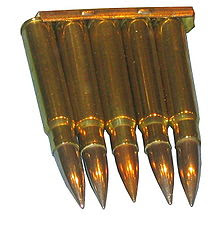Have you ever noticed how things seem to happen in pairs or even in
trifecta? I find it fascinating.
Anyway, this is different than our usual fare of guns, bombs and planes, but it is awesome.
Just like in the movies, people find reasons to disguise themselves. Usually, this involves either
hiding ones' identity with a balaclava,
bandana, flour sack, Halloween mask, etc. or maybe even pretending to be someone else, like with a fake policeman's uniform. The two gentlemen we will discuss today, well, they had their "A" game going.


In the above pic, you can see a man in the commission of of a bank robbery. He actually made four robberies in three hours, including three banks, so we can say that he is willing to work. Not a whole lot to see, huh? Just an African-American man, in a
hoodie and sunglasses. Except, it was really this man.

What you say? Yes, Conrad
Zdzierak wore a movie-quality latex mask from
SPFX to commit several crimes. He was traced to a motel via his getaway car, a Volvo covered in red dye from the dye pack.(Amateur!) The police found items associated with the robberies, including the mask, in his home. Makes me wonder why he didn't just carjack someone for the day. Below is the mask by itself. Notice how he wore sunglasses to hide the most obvious flaw in the mask wear it meets the eyes. That is why you get the hell out of Dodge when you commit four armed robberies in one day, idiot. Conrad is in jail, facing up to 120 years for aggravated robbery.

Anyways, not two days after reading about this, CNN reports on ANOTHER case of someone using a high quality mask to attempt a crime.
This time is was a young Asian man masquerading as a "crusty old white man" and if anything, his costume is even better. The old man hat and cardigan are especially nice touches. Reports from the scene state that he even moved like an elderly person. I wonder if he made vaguely racist comments and smelled like cabbage too. However, people do tend to notice when you board a plane as an old white man and emerge from the bathroom a young Asian man. He was also noted to have young-looking hands. Don't get cheap, they sell gloves too. He boarded a Air Canada flight in
Hong Kong and flew all the way to Vancouver.

Of course what is really scary about this incident is that he was able to board a plane and fly halfway across the world. (Nice police work, there, Lou) When he was apprehended by agents of the Border Service Office, he made a claim for refugee status and protection. No word on whether or not he will get it. He allegedly used a boarding pass and frequent flier card from a US citizen to gain access to the plane.
I have to say, I find this amazingly cool. whenever I have seen these masks in the movies, I've thought to myself, yeah right, it would never work in the real world. But, with truth being stranger than fiction, we can see that it can work. It certainly makes me wonder if we have or will soon have secret agents running about in masks, shedding identities at will like in so many spy novels. Hint Hint CIA, if you still can't recruit enough people to look "Arabic" or "Central Asian" enough to do your spy-stuff, maybe you should employ these talented guys for a little while.
Here is another mask from the folks at
SPFX (http://www.spfxmasks.com/index.html). Even Tom
Savini, the master of movie horror effects, thinks they are cool. If you don't know who Tom
Savini is, get off my blog. No, please don't leave, I need readers. They also do monsters and zombies (!) and stuff, if you want to rob a bank as the devil or something
(For any young, impressionable or stupid readers out there, this is still a bad idea.)
 OMG
OMG!
While doing my usual 40 seconds of research, I found another one!


This is from a robbery in San Diego back in April. The "Geezer Bandit" has robbed at least seven banks in the San Diego area. Once again, the young hands with old face combo gave it away to the tellers. A man has been arrested in connection to these crimes, but it remains to be seen if there is enough evidence to convict him, or if they even have the right man. (Or woman?)

This will likely trigger a bout of severe paranoia and delusions for yours truly. I am probably going to be running about, accosting passerby Austin Powers-style, attempting to pull off peoples faces for several weeks now.
Its a man, baby!
 Here are a couple of photos of Boeing's new Unmanned Combat Air Vehicle, the Phantom Ray.
Here are a couple of photos of Boeing's new Unmanned Combat Air Vehicle, the Phantom Ray.


















































